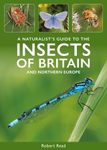![A Naturalist's Guide to the Butterflies of India A Naturalist's Guide to the Butterflies of India]()
Click to have a closer look
About this book
Customer reviews
Biography
Related titles
About this book
This easy-to-use identification guide to the 280 butterfly species most commonly seen in India is perfect for resident and visitor alike. High quality photographs from India's top nature photographers are accompanied by detailed species descriptions, which include nomenclature, size, distribution, habits and habitat. The user-friendly introduction covers geography and climate, vegetation, opportunities for naturalists and the main sites for viewing the listed species. Also included is an all-important checklist of all of the butterflies of India encompassing, for each species, its common and scientific name, its status in the country as well as its global IUCN status as at 2015.
Customer Reviews (1)
-
A good guide to a representative sample
By
Gehan de Silva Wijeyeratne
25 May 2017
Written for Paperback
This book and its sister titles on Mammals and Trees and Shrubs arrived in a very timely fashion, a day before I flew out to Delhi as an invited speaker at the Uttar Pradesh Bird Fair 2016. This book is clearly written by someone who has done a lot of field work and grappled with the issue of telling apart similar butterflies. Butterfly identification can be complicated by the presence of wet and dry season forms as well as colour forms and sometimes differences between sexes. Furthermore, the upper wing view is often very different to the underwing view. A useful photographic guide can, therefore, require many images for a single species. In this book for many species the author and photographer has addressed this with multiple images taken in the field as well as with mounted specimens. The page on the Common Emigrant is a good example, but there are tens of pages where 8 or more images have been used. I was pleasantly surprised that so many images can be effectively used in a small pocket guide. It works because of the quality of the images and the quality of the printing. For example, the differences in the wet and dry season forms of the Yamfly show up very clearly despite the images being postage stamp size. It’s also helpful that a confusion species such as Painted Sawtooth is shown in the description for Common Jezabel. This book aligns some of the thinking commonplace in bird books into a butterfly book. I suspect this book will change how subsequent authors in this series approach other titles. I certainly would have included more images in the title I wrote and photographed on the Butterflies and Dragonflies of Sri Lanka.
The book covers 279 species. In the front sections the author points out that 1,318 species have been recorded in India. Unlike the sister title to mammals, it is impossible to produce a title on butterflies that covers the majority of butterflies a visitor can see to any part of India. However having been to India a few times I do believe the coverage is a fair representation of the different families of butterflies and is a useful guide to learning the commonest species. Furthermore, the way the species included have been treated make this book a very impressive effort and a useful companion to other butterfly books covering the individual countries. The list of picture credits testifies what a big administrative task this book would have been.
This book included all but one of the species I saw during my walks in the grounds of the Chambal Safari Lodge. But it would be unrealistic to expect a similar result on a birding trip to the Western Ghats for example. For a visitor who needs a compromise on weight, or a resident (especially in an urban or semi-urban environment) looking to get started on butterflies, the book would work well.
Other comments
All three titles adopt commonplace principles in photographic field guides with a focus on ID, but also covering distribution and habitat, behaviour etc. The Naturalist Guide series also includes a full checklist of species for animals. For plants, this is reduced to a list of families.
Given the huge numbers of species found on the Indian subcontinent, sometimes less is more. Books like these will make natural history more accessible as they are highly visual and cover a manageable number of species for the beginner or visitor to get their head around.
Gehan de Silva Wijeyeratne
5 of 5 found this helpful
-
Was this helpful to you? Yes No
Biography
Peter Smetacek has studied butterflies all his life. He founded the Butterfly Research Centre at Bhimtal, Uttarakhand and recently published a Synoptic Catalogue of the Butterflies of India (edited together with R.K. Varshney), the first publication to list all of the butterfly species occurring in India.


















































